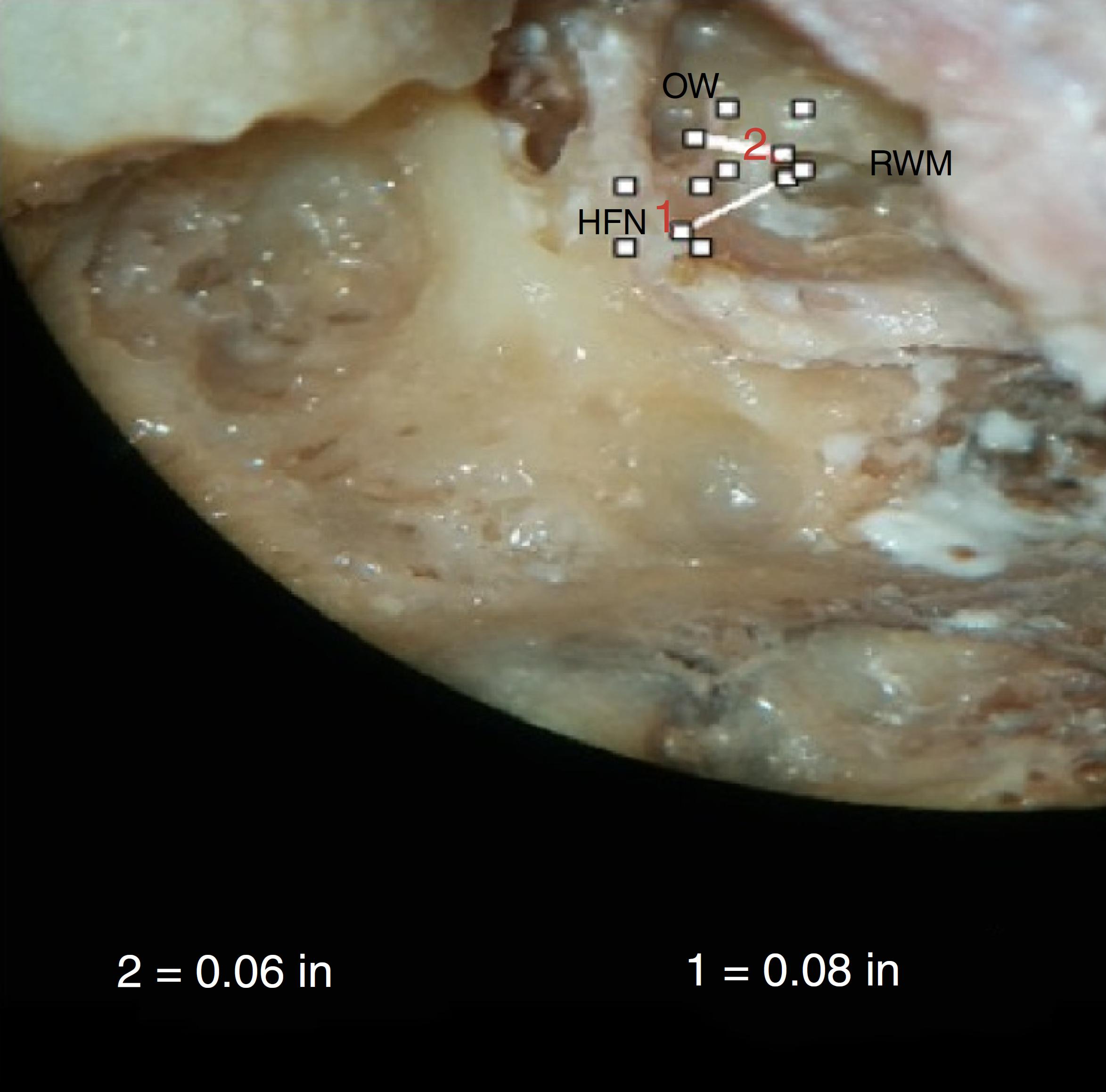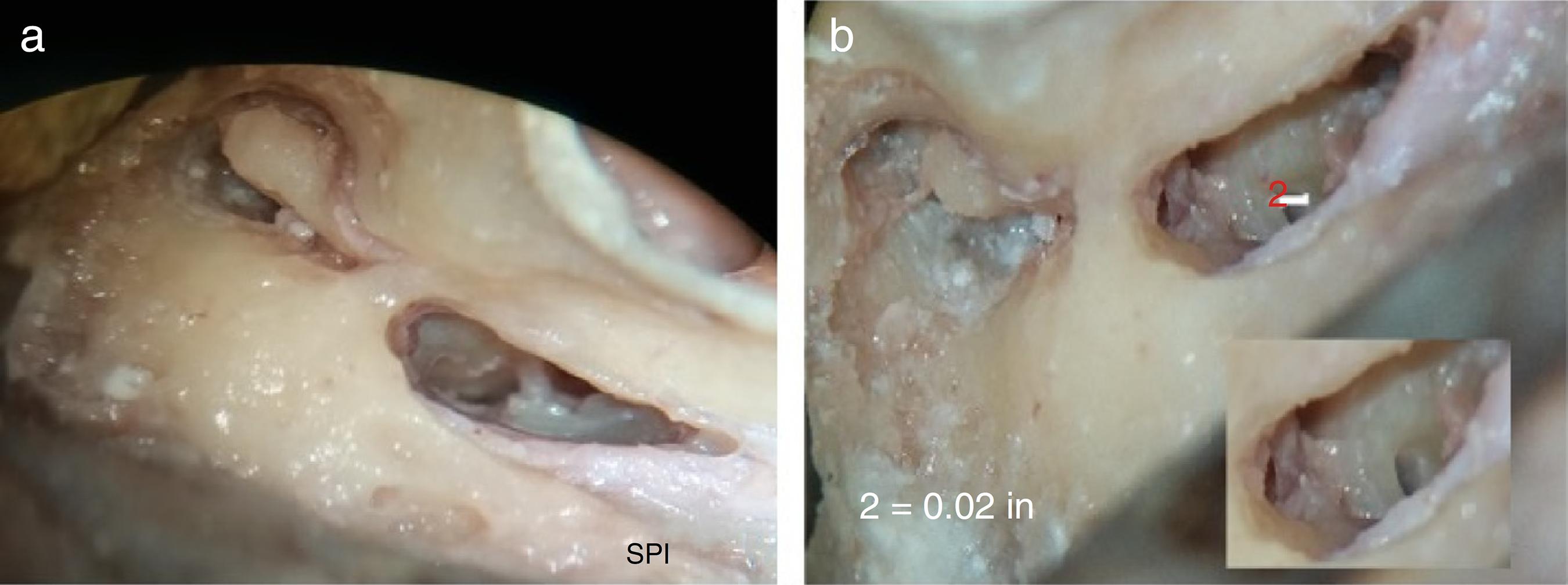Abstract
Introduction:
Various aspects of the round window anatomy and anatomy of posterior tympanum have relevant implications for designing cochlear implant electrodes and visualizing the round window through facial recess. Preoperative information about possible anatomical variations of the round window and its relationships to the adjacent neurovascular structures can help reduce complications in cochlear implant surgery.
Objective:
The present study was undertaken to assess the common variations in round window anatomy and the relationships to structures of the tympanum that may be relevant for cochlear implant surgery.
Methods:
Thirty-five normal wet human cadaveric temporal bones were studied by dissection for anatomy of round window and its relation to facial nerve, carotid canal, jugular fossa and other structures of posterior tympanum. The dissected bones were photographed by a digital camera of 18 megapixels, which were then imported to a computer to determine various parameters using ScopyDoc 8.0.0.22 version software, after proper calibration and at 1× magnification.
Results:
When the round window niche is placed posteriorly and inferiorly, the distance between round window and vertical facial nerve decreases, whereas that with horizontal facial nerve increases. In such cases, the distance between oval window and round window also increases. Maximum height of the round window in our study ranged from 0.51-1.27 mm (mean of 0.69 ± 0.25 mm). Maximum width of round window ranged from 0.51 to 2.04 mm (mean of 1.16 ± 0.47 mm). Average minimum distance between round window and carotid canal was 3.71 ± 0.88 mm (range of 2.79-5.34 mm) and that between round window and jugular fossa was 2.47 ± 0.9 mm (range of 1.24-4.3 mm).
Conclusion:
The distances from the round window to the oval window and facial nerve are important parameters in identifying a difficult round window niche. Modification of the electrode may be a better option than drilling off the round window margins for insertion of cochlear implant electrodes.
KEYWORDS
Round window; Cochlear implantation; Facial recess; Tympanum; Facial nerve












